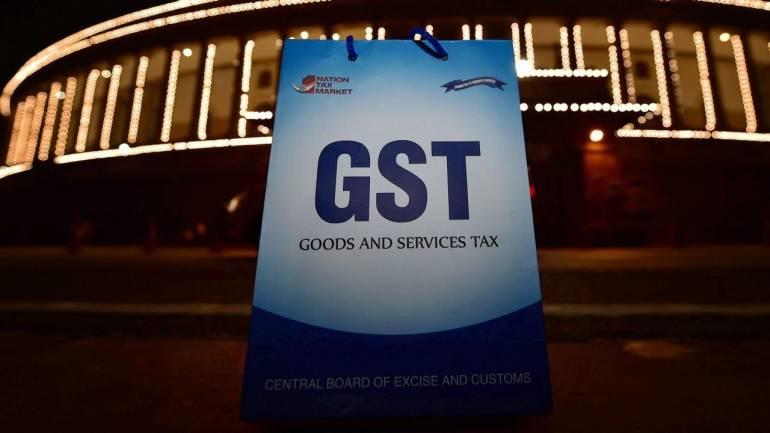The Sluggish Growth in Tax Revenue

The growth in tax revenue of the union government has slowed down perceptibly in the last two years. The growth (over the previous year) in total tax revenue accruing to the centre was 17 per cent in 2016-17; it slowed to 11 per cent in 2017-18, and further to a mere 8 per cent in 2018-19. Since this growth is in nominal terms, the growth in real terms has been even slower. In fact in 2018-19 the growth in real tax revenue could not have been more than about 3 per cent over the previous year, which is much less than the growth in the real GDP of the country. In other words, the proportion of the centre’s tax revenue to GDP has been coming down of late.
At the heart of this slowing down of tax revenue growth is the shift to the GST regime. The real slowing down of tax revenue growth has occurred with respect to indirect tax revenue. The revenue from direct taxes as a proportion of GDP has remained more or less constant; it is indirect tax revenue which has fallen relative to GDP. The growth in indirect tax revenue accruing to the centre was over 20 per cent in 2016-17. It came down to a meagre 6.3 per cent in 2017-18 after the GST regime was introduced, and further to an utterly paltry 2.7 per cent in 2018-19. In real terms the tax revenue from the GST must have actually declined in 2018-19.
The GST regime in short has been the chief culprit behind the sluggish growth of tax revenue of the union government. Initially it was thought that this sluggishness was because of the “teething troubles” being faced by the new GST regime; and when in the first couple of months of fiscal year 2019-20 the total GST revenue (including what accrues to the states) crossed Rs1 lakh crores per month, there was jubilation in official circles that these “teething troubles” were over, and that henceforth we shall have robust GST revenue growth. It turns out however that in June 2019, the latest month for which we have data, the total GST revenue collection has again fallen below Rs 1 lakh crores, reviving all the old fears.
There is of course a problem in sorting out how much of the slowdown in indirect tax revenue growth is because of a slowing down of the economy and how much because of the shift to the GST regime itself. But with a slowing down of the economy, there is no reason why indirect tax revenue should grow slower than the GDP; the fact that this has happened, with the centre’s GST revenue growing by only 2.7 per cent in nominal terms, it is clear that we cannot fall back only on the recession argument for explaining sluggish GST revenue growth; something is clearly wrong with the GST regime itself.
The GST regime, it may be recalled, impinged heavily on the petty production sector. Not only were many units, which had never paid any taxes in the past, now drawn into the ambit of tax payments, but they also had to file tax returns, and maintain careful accounts for claiming refunds, for which they had to hire costly accountants.
In fact there is an element of “indivisibility” here. Since the cost of filing returns does not go up proportionately with the size of the business, larger firms enjoy “economies of scale” in this regard, while for smaller firms the burden is correspondingly larger. Because of this many smaller firms, or units belonging to the petty production sector, had a disproportionately large burden to bear which made their survival even more precarious.
This was sought to be justified, at the time when the GST was introduced, by the argument that it would increase tax compliance and garner larger revenue for the exchequer. It turns out however that while the squeeze on petty production continues to remain, the revenue collection is smaller than before such a squeeze was imposed. In effect, in other words, big business has done well out of the GST regime: its tax burden relative to its turnover must have gone down. This can be inferred from the fact that while the tax base has widened in terms of the number of units covered under the GST ambit, the GST revenue is lower in relation to the GDP, compared to indirect tax revenue earlier.
Since the centre’s and the states’ GST revenues are linked, it means that the states’ GST revenue too must have gone down. The GST has not only entailed an abridgement of states’ rights; it has also brought states to a difficult financial situation. True, there is a tiny list of commodities which are outside the purview of the GST where the states could garner larger revenue; but on the GST itself the states appear to have got short-changed.
The sluggish growth of GST revenue implies that there has been a large shortfall in revenue relative to the estimates of the union budget. In fact in 2018-19 the shortfall amounted to as much as Rs1.6 lakh crores compared to budget estimates; and in 2019-20, while it was originally believed that the GST revenue would pick up to match what the interim budget had envisaged, this appears implausible now.
On top of the slowdown in revenue growth due to the shift to a GST regime, there is the additional slowdown that is occurring because of the slackening of economic activity itself. If the government keeps more or less to the fiscal deficit target in this situation by cutting back expenditure, then that will only further accentuate the slackening of economic activity. On the other hand if it keeps up its expenditure to provide support to economic activity, then that will only widen the fiscal deficit well beyond what had been envisaged in the interim budget for 2019-20.
The problem with an enlargement of the fiscal deficit is not what bourgeois economics says. The idea that a fiscal deficit causes inflation is based on the assumption that the economy is operating at full capacity so that supply cannot be augmented. Obviously that is not the case in India at present and scarcely ever the case in any capitalist economy. The real problem with a fiscal deficit is that it leads to an equivalent creation of private wealth for no rhyme or reason, ie, without the private wealth-holders having done anything to earn it (even by the canons of bourgeois thought).
There is a misconception that a fiscal deficit entails borrowing from the private sector from a pool of savings it has already undertaken; in fact, however, a fiscal deficit actually puts into private hands, without the private sector knowing anything about it, what the government borrows from these very hands.
The way this happens is as follows: a fiscal deficit generates demand in the economy which increases output and hence profits in private hands, a part of which is saved. This process goes on and on until (assuming for simplicity no foreign transactions) the savings generated in private hands exactly equals the fiscal deficit. These savings constitute additions to private wealth. Hence a fiscal deficit adds to private wealth.
If such an addition to private wealth is to be avoided then a tax on private profits or, better still, a tax on private wealth should be used to finance government expenditure. Since the central government’s budget is to be presented in a couple of days’ time, this is a point worth remembering.
With indirect tax revenue growing sluggishly and the economy heading for a recession, government expenditure has to be stepped up, especially government welfare expenditure. And for doing so, it is not a fiscal deficit but a wealth tax, which provides the best way of raising resources. A wealth tax of course must be combined with an inheritance tax, for wealth-holders would otherwise divide up their assets among progeny to escape wealth taxation.
Get the latest reports & analysis with people's perspective on Protests, movements & deep analytical videos, discussions of the current affairs in your Telegram app. Subscribe to NewsClick's Telegram channel & get Real-Time updates on stories, as they get published on our website.
























